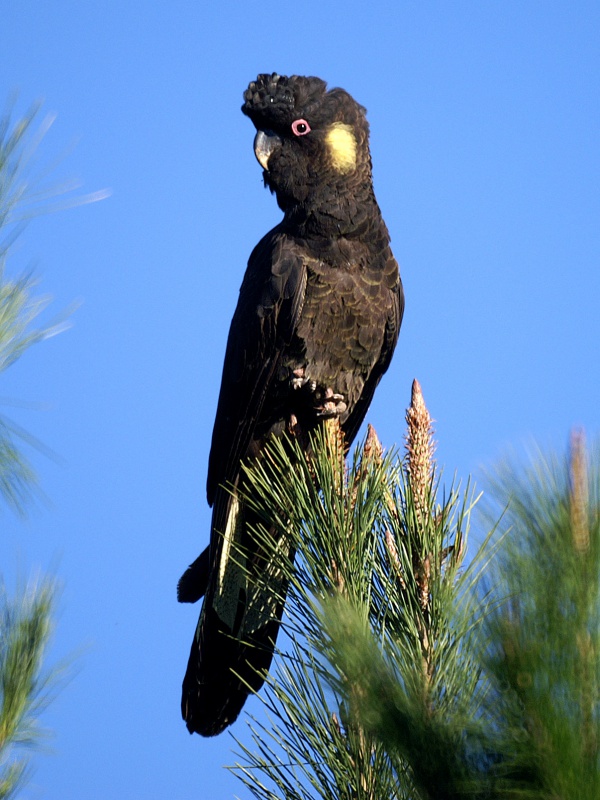Facts About Yellow-tailed black cockatoo
The yellow-tailed black cockatoo is a striking and iconic bird native to southeastern Australia. With its distinctive yellow cheek patches and yellow tail band, it is easily spotted in the forested regions stretching from southeastern Queensland to southeastern South Australia.
There are two recognized subspecies of this bird, each differing slightly in plumage and size. These cockatoos primarily feed on wood-boring grubs and seeds, and they nest in large tree hollows.
First described in 1794, the yellow-tailed black cockatoo belongs to the genus Calyptorhynchus and is part of the subgenus Zanda, which includes two other black cockatoo species. Known for their unique calls and behaviors, these birds exhibit fluid flight patterns and are quite vocal.
Regarding their daily life, yellow-tailed black cockatoos are diurnal and noisy, often seen flying in pairs or small groups. They prefer to roost in tall eucalypt trees and have specific breeding behaviors, nesting in large tree hollows. Their diet is diverse, consisting of various seeds, tree exudates, and insect larvae. Interestingly, they are also known to mimic other bird calls.
Although they are not currently classified as threatened, these cockatoos face challenges such as habitat loss and fragmentation, especially in Victoria and South Australia. Conservation efforts are underway to protect and boost their population. They are rarely seen in captivity and are protected under CITES regulations.
